Beginners Rock Climbing Course in Scotland: Your first steps into the sport
Discover Scotland's Stunning Crags: Where Your Rock Climbing Journey Begins
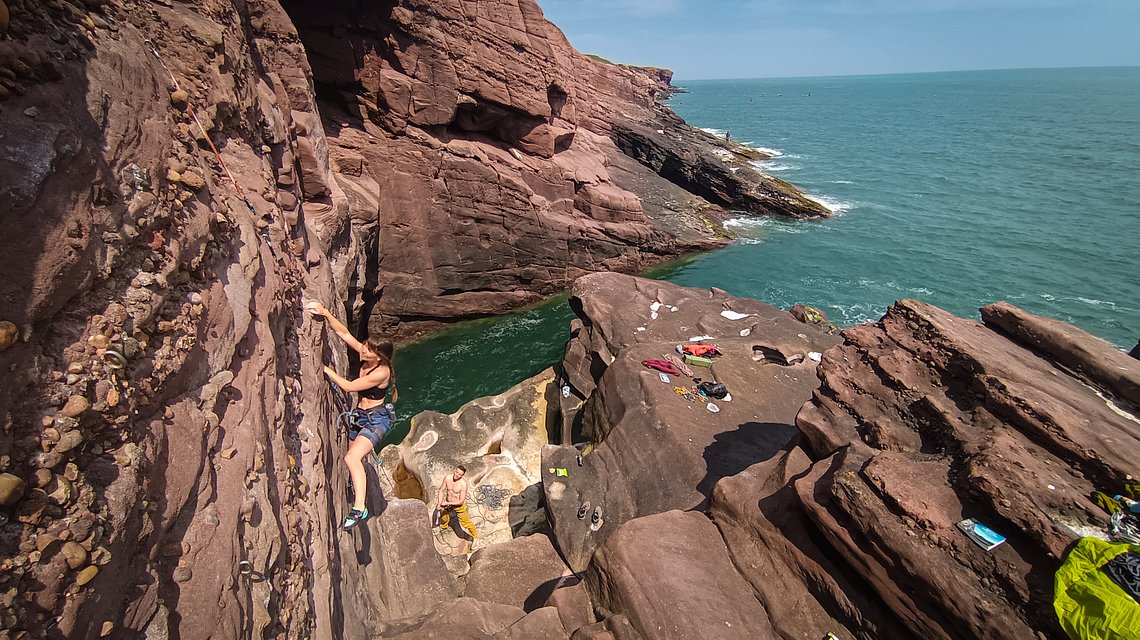
Thu 29 Aug 2024
Beginners Rock Climbing Course in Scotland: Your first steps into the sport
Climbing is for everyone
Embark on a thrilling journey into the world of rock climbing with our Beginners Rock Climbing Course in Scotland. Tailored for those new to the sport, this course offers a perfect blend of adventure, expert guidance, and the stunning landscapes of Scotland’s most accessible climbing locations. Whether you’re looking to conquer a new challenge or explore the natural beauty of Scotland, this course provides everything you need to begin your rock climbing journey safely and confidently.
Why Scotland is the ideal place for beginner climbers?
Scotland is renowned for its dramatic landscapes, rich climbing history, and diverse range of climbing areas that cater to all skill levels. For beginners, the country offers numerous accessible crags and quarries that provide the perfect setting to learn the basics of rock climbing while enjoying the breathtaking scenery.
Course overview: What to expect
Our Beginners Rock Climbing Course is designed to give you a solid foundation in rock climbing, with hands-on training from experienced rock climbing instructors. Here’s what the course includes:
1. Expert Rock Climbing instruction
Participants will receive professional instruction from certified climbing guides who are passionate about the sport and dedicated to teaching beginners. The course covers essential climbing techniques, safety protocols, and the correct use of climbing equipment, ensuring you gain the confidence and skills needed to climb independently.
2. Scotland’s best climbing locations for beginners
The course takes place across some of Scotland’s most popular and beginner-friendly climbing areas:
- Neilston Quarry: Located just outside of Glasgow, Neilston Quarry is a fantastic spot for beginners. The sandstone rock provides a variety of easy to moderate routes, making it an excellent place to start your climbing adventure. The quarry’s accessible location and well-bolted routes allow for a safe and enjoyable experience, perfect for mastering the basics.
Benny Beg: Situated near Crieff, Benny Beg is another ideal location for novice climbers. This compact limestone crag offers well-maintained routes with a range of difficulties, but most are geared towards beginners. The short, straightforward climbs at Benny Beg are perfect for practicing your technique and building confidence on the rock.
Auchinstarry Quarry: Auchinstarry Quarry, located near Kilsyth, is a historic climbing venue with a range of routes suitable for all abilities. For beginners, the quarry offers several easy to moderate climbs on solid dolerite rock. The quarry’s scenic setting, alongside the Forth and Clyde Canal, provides a beautiful backdrop as you learn the ropes.
Traprain Law: Located in East Lothian, Traprain Law is a volcanic crag offering a range of routes on solid, rough rock. The climbs here are varied, with plenty of options for beginners to challenge themselves while enjoying panoramic views of the surrounding countryside. Traprain Law is also rich in history, adding a unique element to your climbing experience.
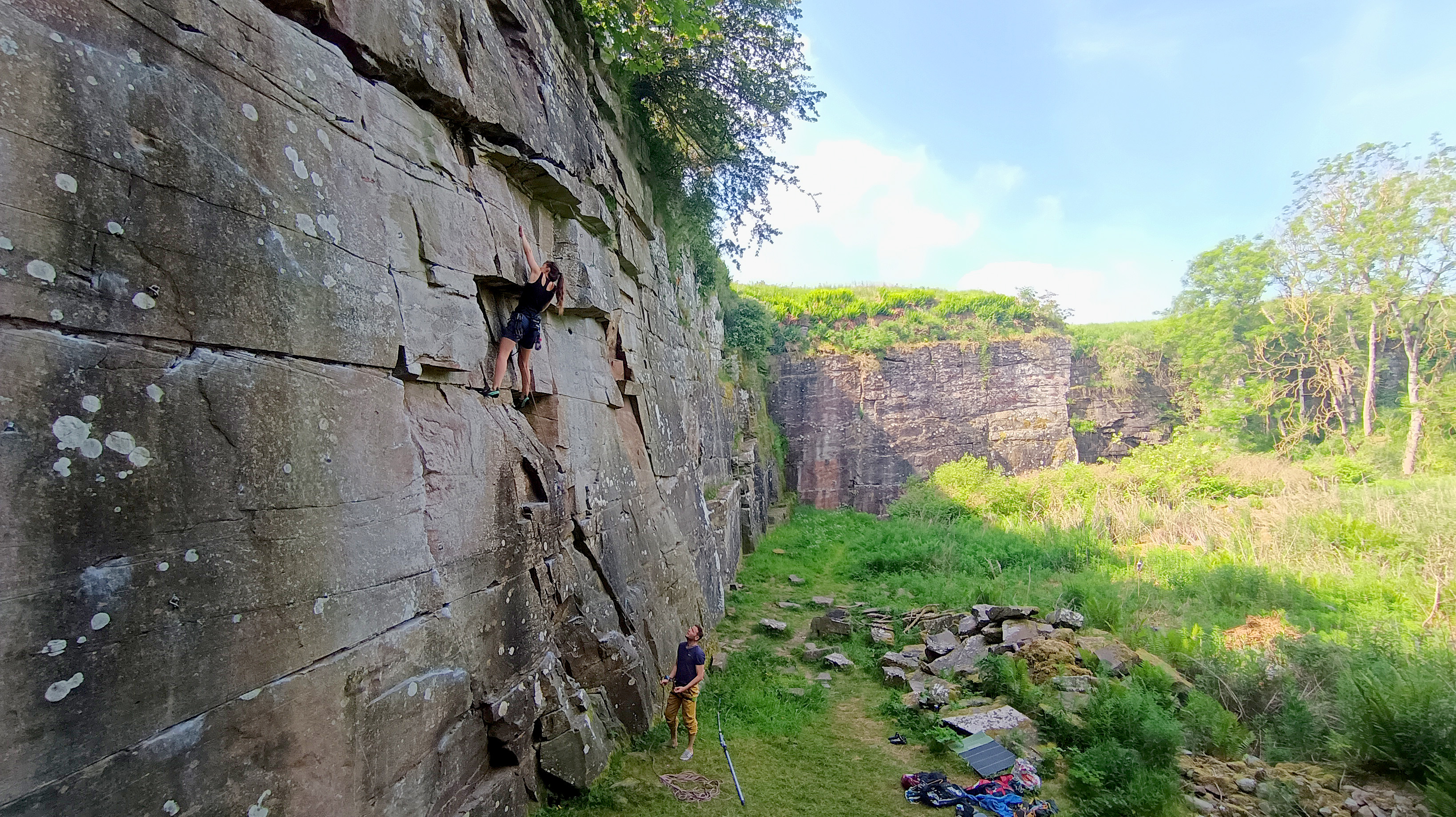
Climbers in Legaston Quarry
3. Safety first: Equipment and procedures
Safety is paramount in our course. Participants will learn how to properly use all necessary climbing equipment, including harnesses, ropes, belay devices, and helmets. The course emphasizes the importance of safety protocols, such as proper belaying techniques, knot tying, and effective communication between climbing partners.
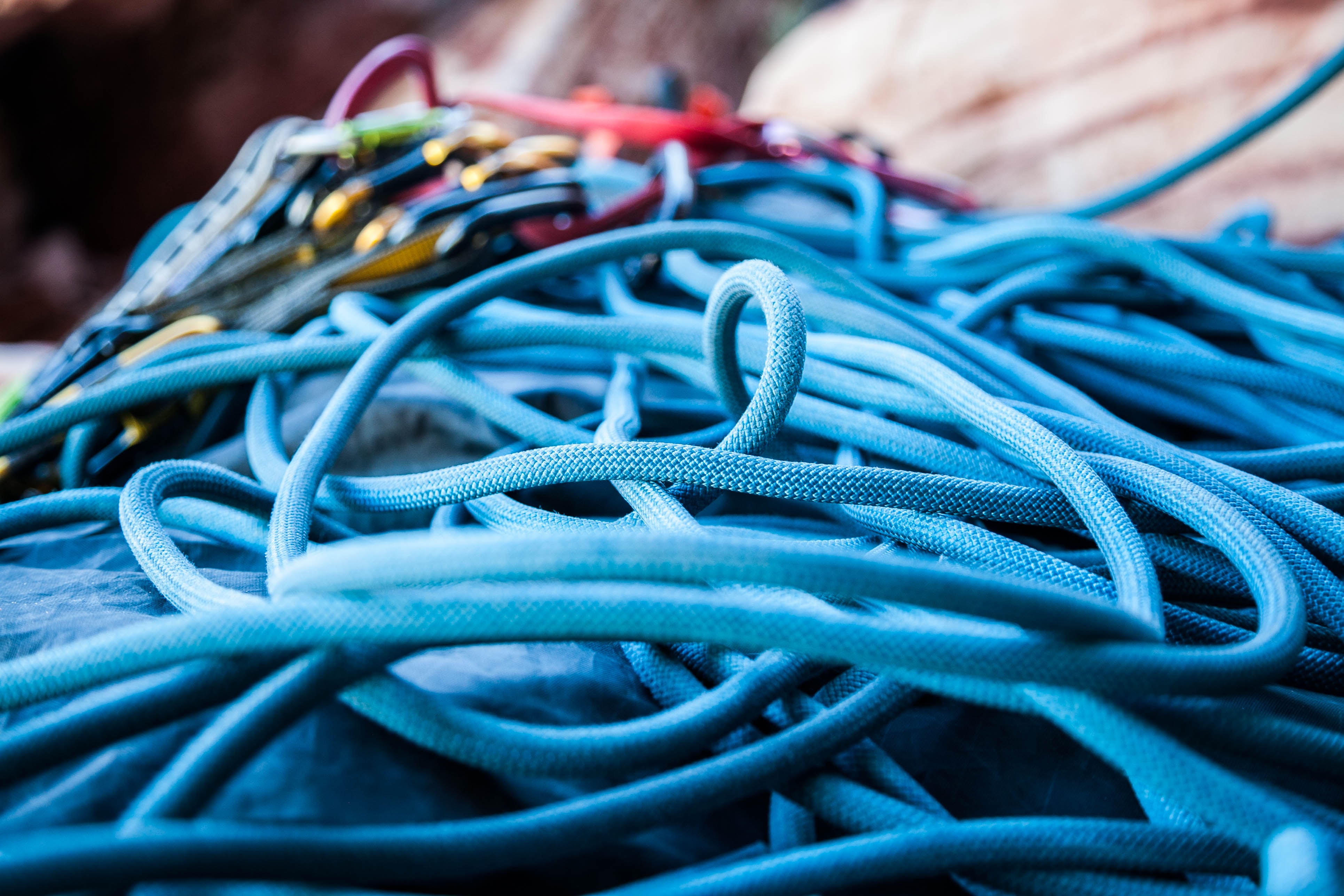
Dynamic ropes for climbing. These ropes are optimal for absorbing the shock of a fall
4. Personalized learning experience
Our small group sizes ensure that every participant receives personalized attention from our instructors. This approach allows you to learn at your own pace, with guidance tailored to your individual needs and skill level. Whether you’re completely new to climbing or have some prior experience, our instructors will help you progress confidently.
What you’ll learn during the Course
By the end of the Beginners Rock Climbing Course, you will have a strong foundation in the following areas:
Basic climbing techniques: Develop your climbing skills, focusing on balance, movement, and using both your hands and feet effectively on different rock surfaces.
Rope skills: Learn essential rope management techniques, including knot tying, belaying, and rappelling, which are crucial for safe climbing.
Safety practices and Climbing Etiquette: Understand the safety protocols and unwritten rules of the climbing community that ensure a secure and respectful climbing environment.
Route selection and crag understanding: Gain the knowledge to choose appropriate climbing routes based on your skill level and understand how to identify potential climbs within your grade.
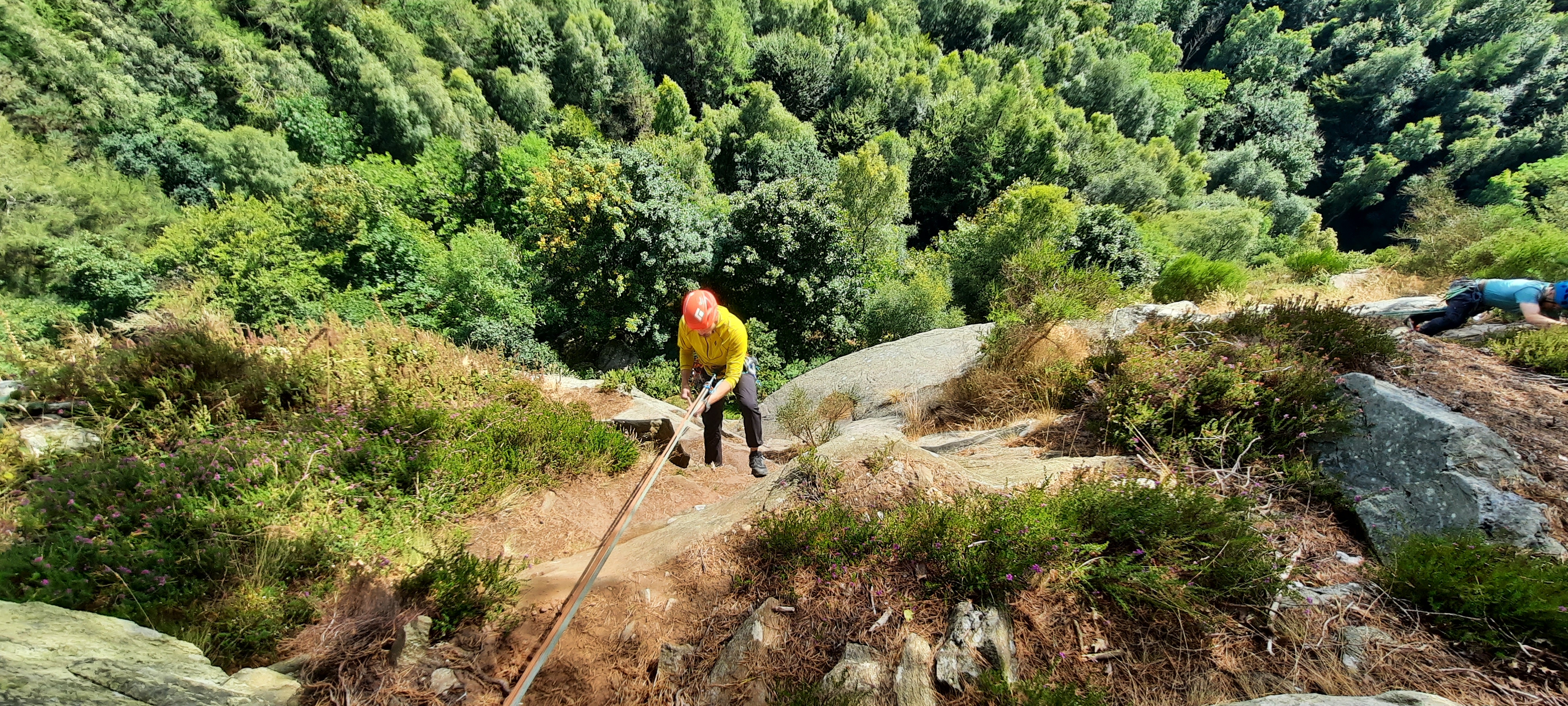
Abseiling practice during the course session
Why choose this course?
Our Beginners Rock Climbing Course offers a unique opportunity to explore some of Scotland’s most accessible and picturesque climbing spots while learning from passionate and experienced Rock Climbing Instructors (RCI). With a focus on safety, personalized instruction, and the beauty of Scotland’s outdoors, this course is the perfect way to start your rock climbing journey.
Take a look at the program and all the details.
Understanding the differences between trad climbing and bolted climbing in Scotland
Scotland is a climber's paradise, offering a diverse range of routes that cater to both traditional (trad) and bolted climbing lovers. Whether you're a seasoned climber or just beginning your journey, understanding the differences between these two styles is essential for choosing the right routes and ensuring a safe and enjoyable experience.
What is Trad Climbing?
Trad climbing is short for "traditional climbing," a style where climbers place their own protection as they ascend. This method requires climbers to use gear such as nuts, cams, and hexes, which are placed in natural cracks and fissures in the rock. These pieces of gear are then clipped to the rope to protect against falls.
Key characteristics of trad climbing:
Gear placement: In trad climbing, climbers are responsible for placing and removing their own protection. This requires a good understanding of gear and rock formations to ensure placements are secure.
Route finding: Trad climbers often follow natural lines and features of the rock, such as cracks, seams, and corners, rather than fixed routes. This adds an element of adventure and creativity to the climb.
Minimal environmental impact: Because no permanent hardware is left on the rock, trad climbing is often seen as a more environmentally friendly approach, preserving the natural state of the climbing area.
Commitment and skill: Trad climbing requires a high level of commitment and technical skill. Climbers must be confident in their gear placements and route-finding abilities, as the safety of the climb largely depends on their judgment.
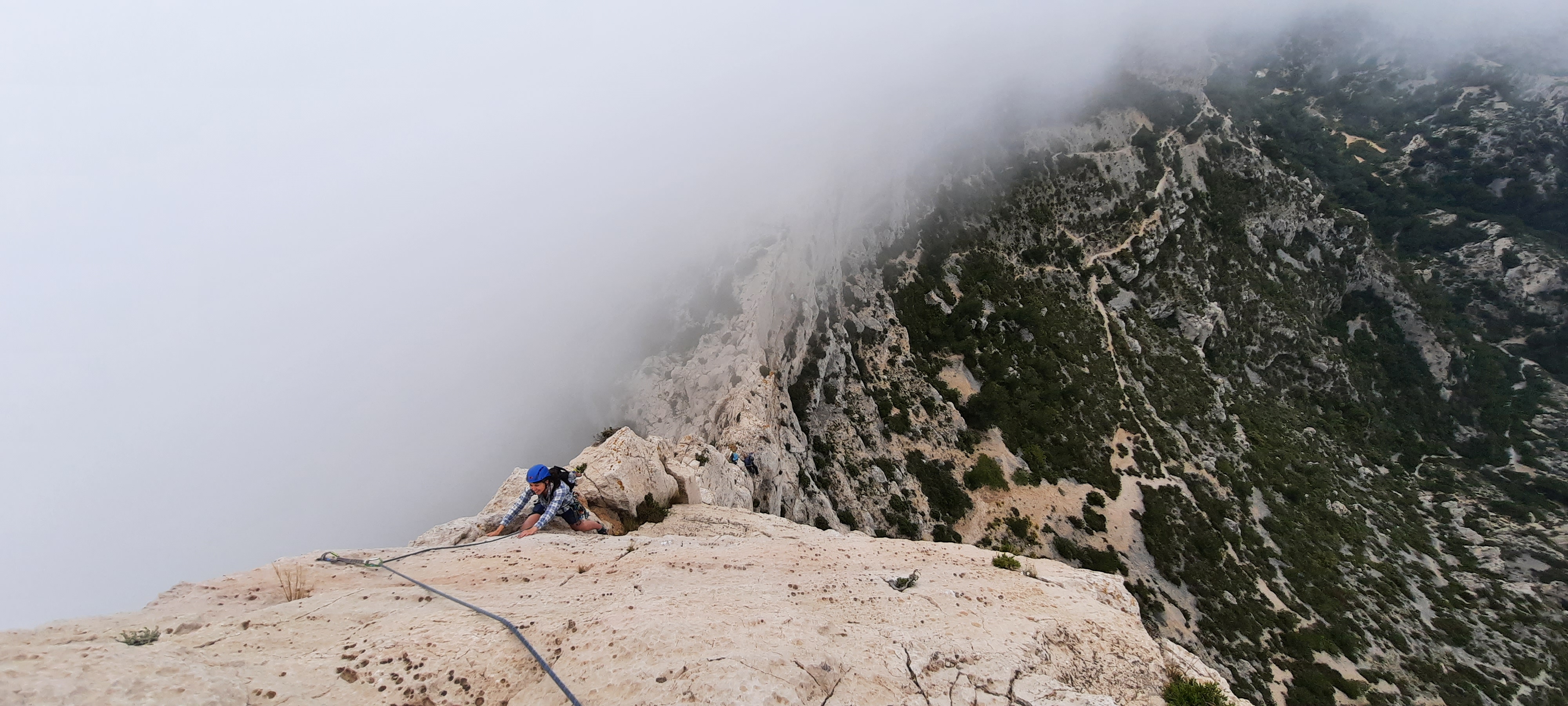
Trad climbing one of the Calanques classic arêtes
What is Bolted Climbing?
Bolted climbing involves climbing routes that have been pre-equipped with permanent anchors, known as bolts, which are drilled into the rock. Climbers use quickdraws to clip their rope into these bolts as they ascend, providing protection against falls.
Key characteristics of bolted climbing:
-
Pre-placed protection: Bolted routes have fixed protection points, making it easier for climbers to focus on movement and technique without the added responsibility of placing gear.
Defined routes: Bolted climbing often follows a specific line, marked by the placement of bolts. This can make the route more straightforward, with a clear path to the top.
Accessibility: Bolted routes are generally more accessible to climbers of all skill levels, as they remove the need for gear placement and route-finding expertise. This makes bolted climbing a popular choice for beginners and those looking to focus on improving their climbing technique. Climber focus on difficulty, trying to achieve the highest grades.
Higher density of routes: Climbing areas with bolted routes often feature a higher density of climbs, allowing climbers to try multiple routes in a single outing.
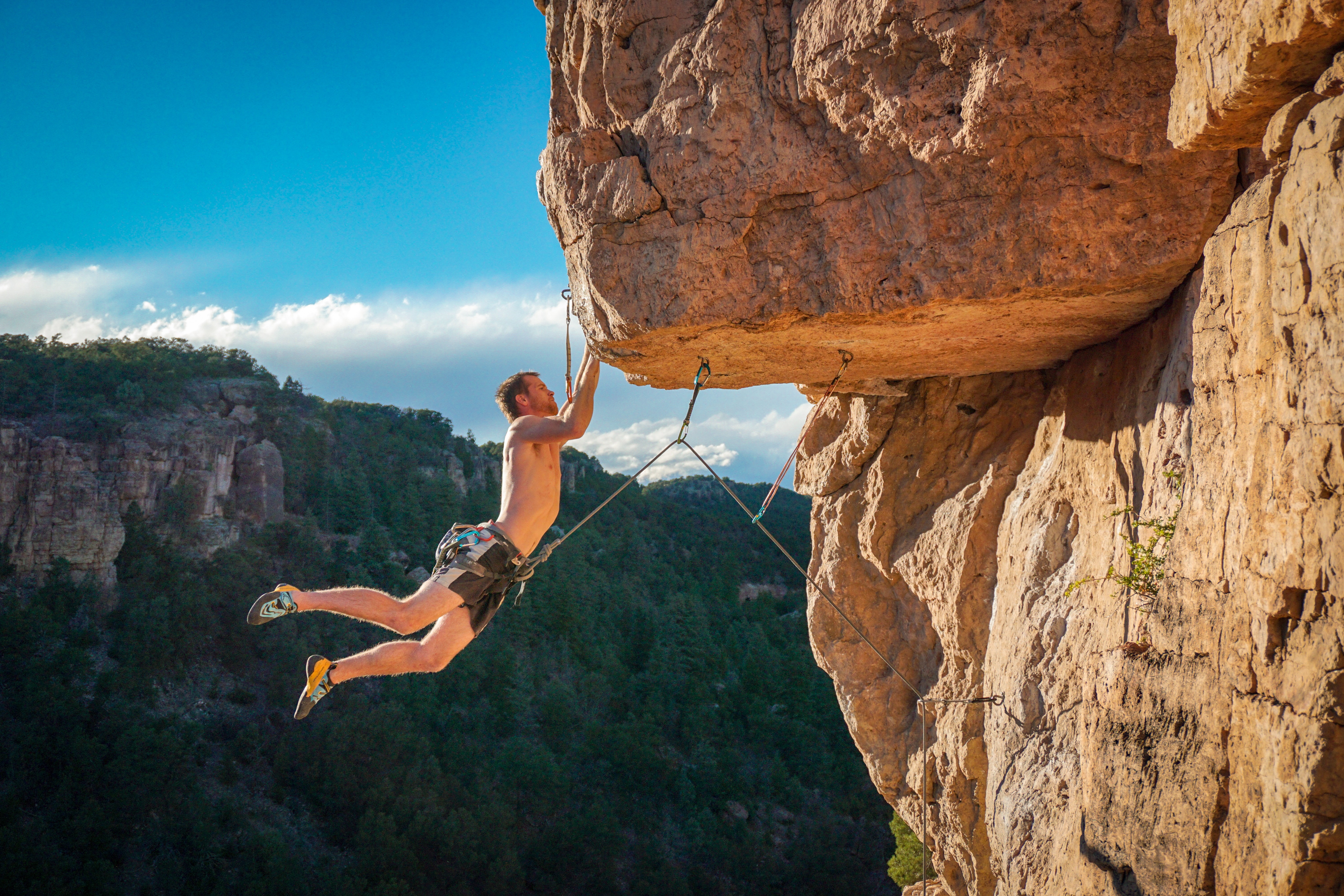
Sport climbing. Looking for the most fun moves and technical routes
Trad Climbing vs. Bolted Climbing in Scotland
Scotland offers an abundance of both trad and bolted climbing opportunities, each providing unique experiences.
Trad climbing in Scotland
Scotland is renowned for its trad climbing, with many of its iconic crags and mountains offering world-class routes. Areas such as Ben Nevis, Glencoe, and Cairngorms are famous for their traditional routes that challenge climbers with complex gear placements and route-finding. The rugged and wild nature of these areas adds to the adventure, making trad climbing in Scotland a truly immersive experience.
Ben Nevis: Home to some of Scotland's most famous trad routes, Ben Nevis offers climbers a range of challenges, from long multi-pitch climbs to technical single-pitch routes. The mountain's varied terrain, including cracks, chimneys, and slabs, provides endless opportunities for trad climbers.
Glencoe: This iconic valley is a trad climber's dream, with routes ranging from moderate to highly technical. The imposing cliffs and dramatic scenery make every climb here a memorable adventure.
Cairngorms: Known for its granite crags and high-altitude routes, the Cairngorms offer a mix of trad climbs that require careful gear placement and route-finding skills. The exposed and often remote locations add an extra layer of challenge.
Bolted climbing in Scotland
While Scotland is traditionally known for its trad climbing, there are also excellent bolted climbing areas that cater to climbers of all levels. Bolted routes can be found in locations such as Dumbarton Rock, Benny Beg, and Weem, providing accessible and well-protected climbs.
Dumbarton Rock: A popular spot near Glasgow, Dumbarton Rock is home to some of Scotland’s most famous bolted routes. The rock's steep and technical climbs are well-equipped with bolts, making it a favorite among sport climbers.
Benny Beg: Located near Crieff, Benny Beg offers a range of bolted routes that are perfect for beginners. The short, accessible climbs provide a great introduction to bolted climbing, with well-placed bolts ensuring safety.
Weem: This crag offers a variety of bolted routes on quality schist rock, with climbs that cater to different skill levels. Weem is a great spot for climbers looking to enjoy bolted routes in a scenic setting.
Which style is right for you?
The choice between trad and bolted climbing ultimately depends on your preferences, experience, and goals as a climber.
For adventure seekers: If you enjoy the challenge of placing your own protection, navigating natural routes, and experiencing a more traditional form of climbing, trad climbing in Scotland’s rugged landscapes may be the perfect fit.
For technique focused climbers: If you prefer focusing on climbing technique without the added responsibility of gear placement, bolted climbing offers a more straightforward and accessible option. Bolted routes in Scotland allow you to build confidence and skills while enjoying well-protected climbs.
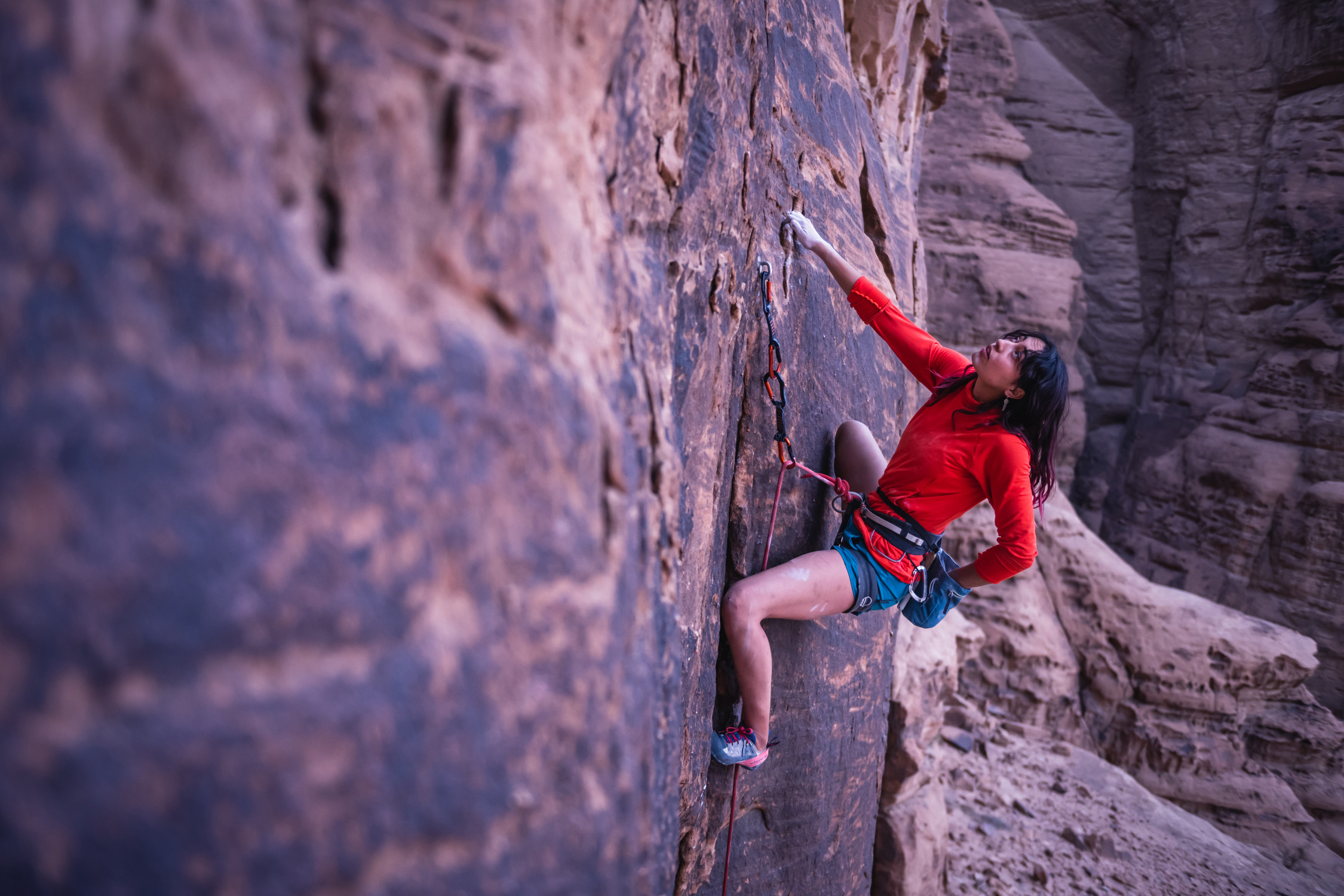
Anna Hazlenutt in one of Kookoo Climb's trips to Jordan
Both trad and bolted climbing offer unique and rewarding experiences in Scotland's diverse climbing environments. Whether you’re drawn to the adventurous spirit of trad climbing or the technical precision of bolted routes, Scotland provides a wealth of opportunities to explore and enjoy the sport. By understanding the differences between these two styles, you can choose the climbing experience that best suits your skills and aspirations, ensuring a memorable and fulfilling climbing journey in one of the world’s most stunning outdoor settings.


